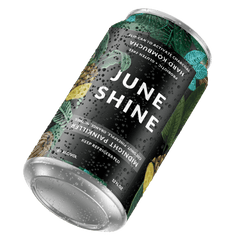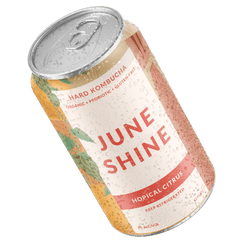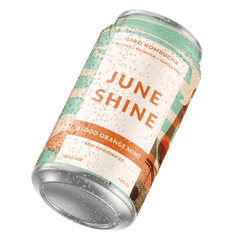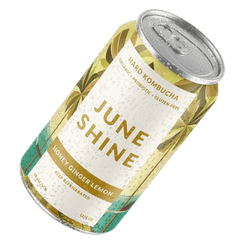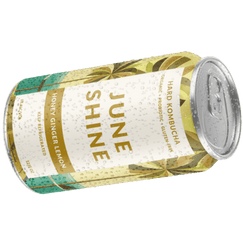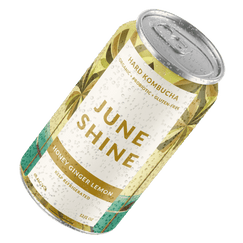Here Are the 5 Best Tips for Kombucha Brewing at Home

Tea is usually pretty easy to make. Boil some water, add a teabag, and you’re good. When it comes to brewing fermented teas like kombucha, things get a little more complicated.
Kombucha is made from a blend of tea leaves, sugar or honey, and live bacteria and yeast. When combined, the fermentation magic begins as the bacteria and yeast chow down on honey from the tea.
The result is a uniquely fizzy drink packed with probiotics, antioxidants, and a little bit of booze (or a little more, if you’re talking about our hard booch).
While drinking traditional kombucha is fun, relaxing, and cool, actually brewing kombucha requires a lot more work and research.
1. What Ingredients to Use
A quality drink starts with quality ingredients. Let’s run down the list of what exactly you’d need to brew kombucha if you’re brave enough to try it.
Start With Tea
To start, make sure you’re using the right tea leaves—you’ll need the ones that come from the Camellia sinensis plant. You have quite a few options here, including black, oolong, green and white tea. Each one will give you a slightly different taste, thanks to the different levels of oxidation you’ll find.
Dechlorinated Water
Make sure you’re using dechlorinated water—and this isn’t as simple as avoiding the pool. Most of the water we drink actually has low levels of chlorine in it, so you’re going to have to search out one without it.
Kombucha contains living microorganisms, which come from the bacteria and yeast, and give booch all those great probiotics. You’ve got to keep them alive, and chlorine will do the opposite of that.
A Touch of Honey
When brewing kombucha, organic cane sugar is a solid choice. The longer you ferment your kombucha, the less sugar the final product will contain, so plan accordingly for the sweetness level you’re looking for.
We prefer to use honey when making our hard kombucha, both because we’re committed to using real, organic ingredients and because it lends a smoother flavor to our booch.
SCOBY, Bacteria, and Yeast
All these ingredients are great, but they won’t get you anywhere without the bacteria and yeast. Most of the time, SCOBY, or a symbiotic culture of bacteria and yeast, is used, but you don’t actually need SCOBY. All you need is a byproduct of the kombucha brewing process. Raw, unflavored kombucha will do.
When making kombucha, make sure to remove the top layer of your bacteria and yeast and save it for your next batch of traditional kombucha.
If you decide to purchase a SCOBY, don’t buy any products that are packaged in plastic. The SCOBY can absorb chemicals from the plastic and seep into your drink.
2. Starter-to-Tea Ratio
Now that you know what ingredients to use, it’s time to decide how much of each ingredient should be used. Generally, use a starter-to-tea ratio of 1:10. That means for every ounce of starter liquid you use, use 10 ounces of tea leaves.
There is no exact science to kombucha brewing, as every producer prefers to make theirs differently.
3. Brew In the Right Vessel
As much as people like to say it’s only what’s on the inside that matters, what’s on the outside is pretty important, too—at least when it comes to making booch.
Use a glass, ceramic, or high-grade stainless steel container to ferment your ingredients, and never use plastic. Plastic containers can cause the growth of bad bacteria in your brew and effectively destroy your batch.
Ideally, the vessel you use should also give your drink room to grow and breathe. Bacteria and yeast prosper in settings with a large surface area. At the start of the fermentation process, your tea should fill up only about half of your jar.
4. Stimulate Your Culture
Occasionally, you’ll experience a bacteria and yeast blend—also known as a culture—that just isn’t fermenting fast enough.
If the interactions between your bacteria and yeast are weak, your drink may not be able to produce enough carbonation for that iconic fizz.
Too much sugar can cause the yeast to stop reproducing completely. This phenomenon is known as the crabtree effect. To combat this, feed the brew less sugar for a few days, then slowly add more sugar for the days after. This should trigger growth for the bacteria and yeast.
As a precaution to avoid this nonsense, use a strong tea with high amounts of caffeine. The caffeine will help stimulate yeast production.
5. Be Patient During Winter
Brewing can become very slow in the winter. It may get so slow that you’re wondering if your kombucha is even alive anymore.
This is completely normal. You may have to wait three to four weeks just for it to ferment.
If you keep it a little chillier, your kombucha might be struggling. Store your kombucha in a warm spot near a heat source. Most of all, stay patient! The winter months are notoriously difficult for kombucha brewers.
Fun fact: Yeast thrives between 68 and 75 degrees Fahrenheit.
Skip the Brewing
If this sounds like it’s a lot of hard work, that’s because it is. Brewing kombucha is no joke, and it takes quite a bit of practice to get it right. Of course, if you don’t want to put in that kind of effort, we have a solution—and it’s tart, fizzy, refreshing, and just bold enough. Find out what we’re talking about here.
Sources:
Crabtree Effect - an overview | Science Direct
Vitamins & Supplements Health benefits of taking probiotics | Harvard
Antioxidants | Medline Plus